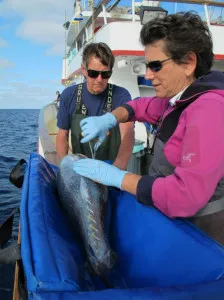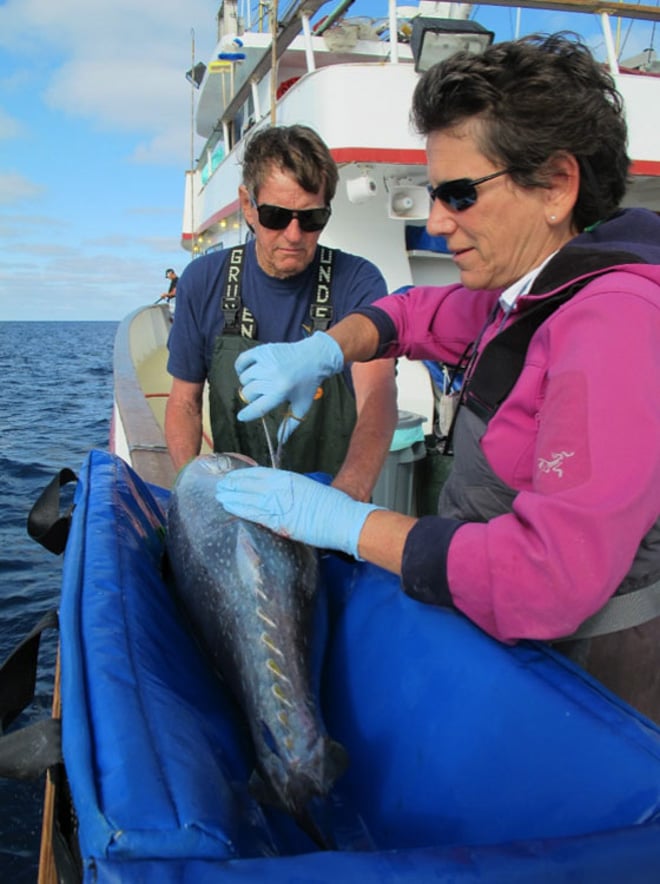
A group of Stanford researchers has used the temperature regulation mechanisms present in bluefin tuna to track the creature’s movements and eating activity, allowing for insights of unprecedented detail that could aid conservation efforts.
A collaboration between Stanford, the Monterey Bay Aquarium and the National Oceanic and Atmospheric Administration (NOAA), the study took advantage of the fact that a bluefin tuna’s stomach temperature increases when the fish eats food. The scientists’ work was also the first to measure energy consumption of a wild aquatic animal – useful for understanding both more about the species itself and also bluefins’ patterns of migration.
Bluefin tuna are one of the few warm-blooded fish. They have closely arranged blood vessels that enable counter-current heat exchange – a process that allows them to retain the heat they generate by moving and consequently stay warmer than the temperature of the surrounding water. As a result, the fish are more powerful swimmers, can thrive in colder temperatures and expend less energy during digestion.
The scientists used trackers to collect measurements of body and water temperature, as well as the tuna’s locations and diving patterns. Researchers first tagged the tuna off the coast of Southern California and Mexico and ended up recovering over a third of the trackers with the aid of fishermen. Fishermen who caught tagged tuna were given a reward for sending the trackers back to the researchers.
The data obtained from the trackers detailed the species’ migration from Mexico to Oregon. Researchers were able to get data for periods of up to three years, enabling them to “see” every meal the fish had eaten during that time.
Scientists then compared the tracking data to satellite data on ocean currents, chlorophyll levels and temperature measurements – three indicators for good feeding grounds. Generally, the tuna’s paths matched well with these areas, but sometimes the fish did not take advantage of the best possible regions.
The traditional range of bluefin tuna migration spans from north of Oregon to south of the Baja Peninsula. The study explained both why bluefin thrive in a different set of regions from other closely related fish and also what specifically those regions were.
Data showed that bluefin preferred to feed in areas where their body temperature could be optimally maintained during digestion, and the researchers mapped a region of the ocean where they thrive: “The Blue Serengeti.”
According to Barbara Block, one of the paper’s authors and a marine sciences professor at Hopkins Marine Station, understanding the feeding patterns of bluefin tuna could help improve conservation efforts.
“Our results add to our understanding of predator-prey dynamics in the California Current,” Block told The Stanford Report. “By understanding where bluefin forage most, we can help protect these places and improve efforts to rebuild Pacific bluefin tuna stocks.”
Contact Skylar Cohen at skylarc ‘at’ stanford.edu.
